How Do Gas Wells Affect The Native Animal Populations, Such As The Pronghorn Antelope


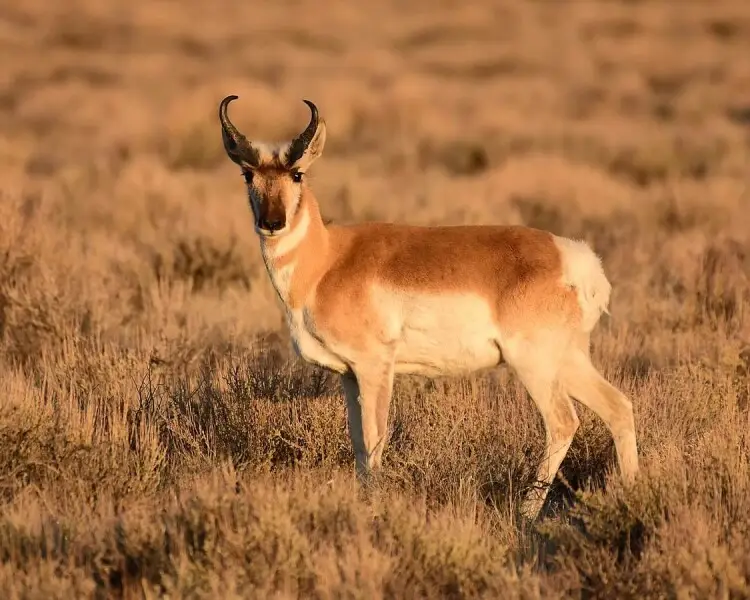
Pronghorn
Prong cadet, Pronghorn antelope, American antelope
The pronghorn is unique amongst mammals. It does not belong to the antelope or the caprine animal family and neither is it related to African antelopes. Its colour is tan to ruddy-brown. Its cheeks, belly, chest, rump, and the insides of its legs are white. Males have a broad blackness mask running from their eyes to their nose, black parches on their neck, and pronged black horns. The horns of the male are shaped like a lyre, curving in towards each other. Females don't have black markings, and the horns are generally directly short spikes. The pronghorn possesses horns, not antlers, and is the only animal with branched horns and the only fauna that each year sheds its horns. The outer sheath falls off in the autumn and grows dorsum every summertime.
Photos with Pronghorn
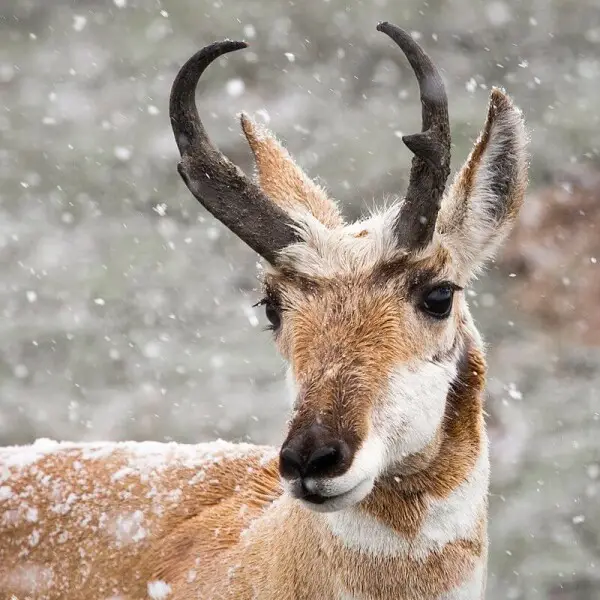

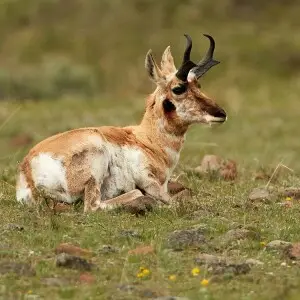
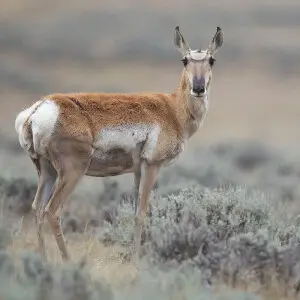
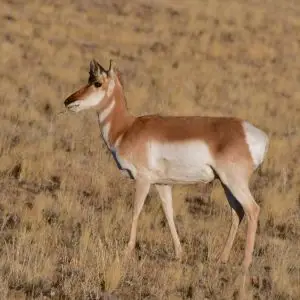
View 28 more photos of Pronghorn
Distribution
Geography
Alberta, Manitoba, Saskatchewan, Arizona, California, Colorado, Idaho, Iowa, Kansas, Minnesota, Evidence More than Montana, Nevada, New United mexican states, Due north Dakota, Oklahoma, Oregon, South Dakota, Texas, Utah, Washington, Wyoming, Baja California Show Less
The pronghorn is native to Due north America and is distributed throughout the treeless deserts, plains, and basins of western Due north America, across the southern prairie provinces in Canada, south into the west of the United States, and to the northward of Mexico. Pronghorns are typically constitute in grassland, chaparral, sage scrub, and desert. The southern office of their range consists by and large of open prairies and arid grasslands.

Biome
Climate zones
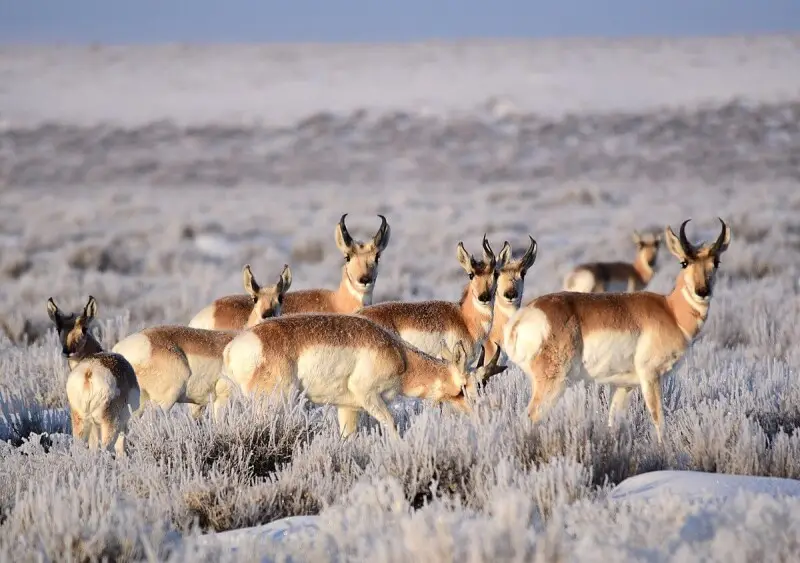
Habits and Lifestyle
This highly-strung animal is active day and nighttime, alternating snatches of sleep with focused feeding. Pronghorns are opportunistic and selective foragers. The timing, length, and seasonal movement patterns vary regionally. Pronghorns come together in mixed-gender herds in winter. The herds break up in early bound and young males form bachelor groups, females join a grouping of females, and developed males live on their own. Females class authority hierarchies which include round relationships. Dominant females will aggressively displace other females at feeding sites. Pronghorns travel upwardly to 160 km away from winter ranges to get away from very deep snow.
Diet and Nutrition
Pronghorns are herbivorous (folivorous) animals. In summer, they graze on grasses, cactus, and forbs, while in winter, they eat sagebrush and other plants that are available.
Mating Habits
Pronghorns are polygamous. Late in summer or in early on fall, a male gathers his harem of iii or four does. Pronghorns are usually ready to breed at 16 to 17 months. Breeding takes place from mid-September until October. Horns are shed one month after breeding. Females usually produce twins, following a gestation of nearly 250 days. Subsequently birth, for several days the fawns are weak and cannot keep up with the adults, so mothers and the young rest nigh the h2o until they are strong plenty. Females care for their fawns from birth until 1 to 1.v years, until they are independent. Males do not help with raising offspring. Reproductive maturity is reached at 15 to xvi months, though males rarely breed until iii years old.
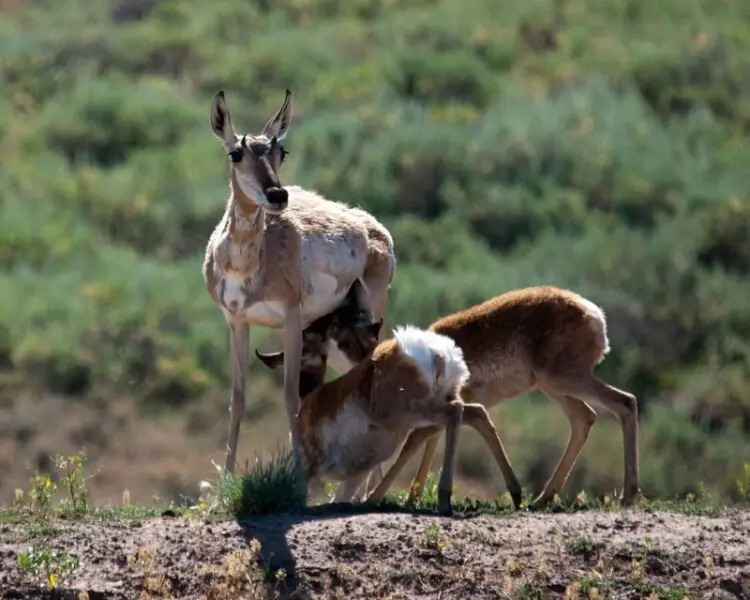
Population
Population threats
Today, there are some localized declines taking place, especially to the Sonoran Pronghorn, mostly as a issue of livestock grazing, new roads, and fences, and other barriers to historical habitat, insufficient food and water, illegal hunting (peculiarly in United mexican states), and lack of recruitment.
Population number
According to the IUCN Cerise List, the total pronghorn population size is around 1 million individuals. Specific populations of this species have been estimated in such areas: fewer than 300 individuals of Sonoran pronghorn in the U.s.; 200-500 individuals in Mexico; effectually 200 Peninsular pronghorn in and effectually breeding centers in Baja California. Overall, currently, pronghorns are classified equally Least Concern (LC) and their numbers today remain stable.
Ecological niche
Throughout their range, these animals live aslope cattle, sheep, bison, and horses. Pronghorns better rangeland quality for other species through eating invasive plants and baneful weeds. Introduced livestock may overgraze in areas shared with pronghorn, reducing cover and the amount of food. Reduction of cover may cause more than deaths amongst the young through predation.
References
More Fascinating Animals to Learn Virtually
Source: https://animalia.bio/pronghorn
Posted by: watersthermse.blogspot.com

0 Response to "How Do Gas Wells Affect The Native Animal Populations, Such As The Pronghorn Antelope"
Post a Comment